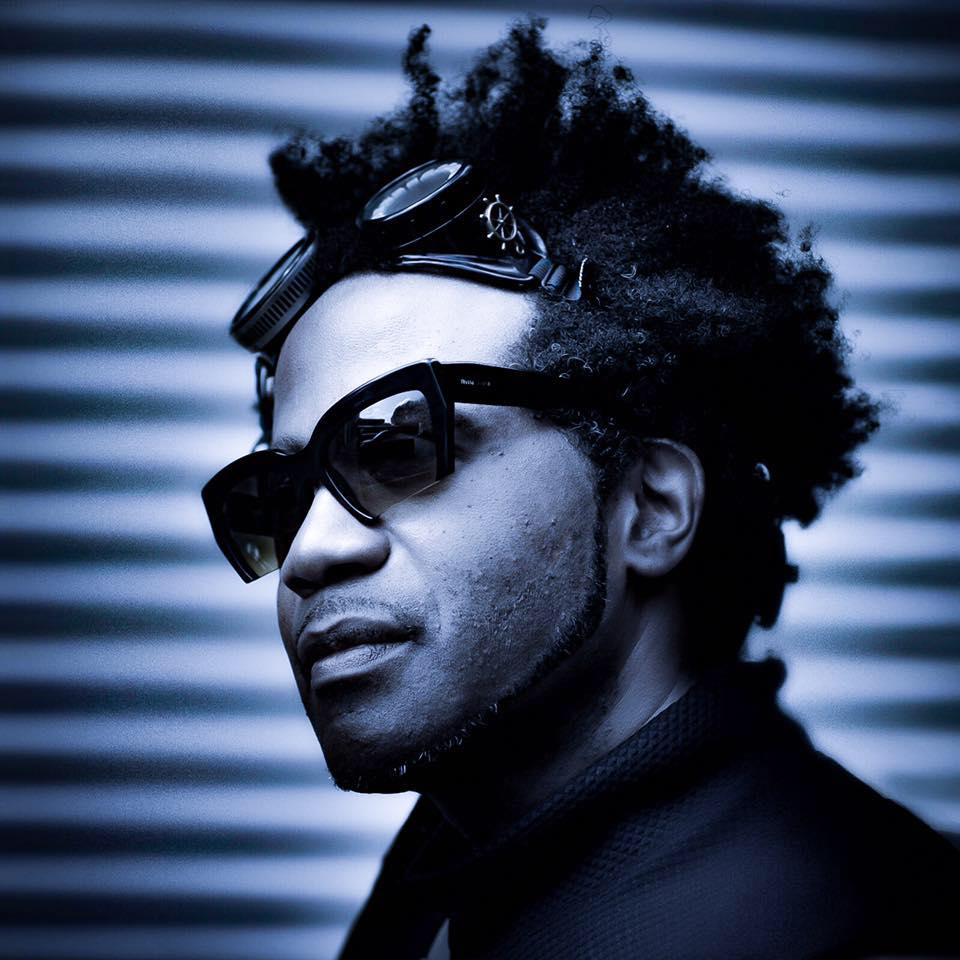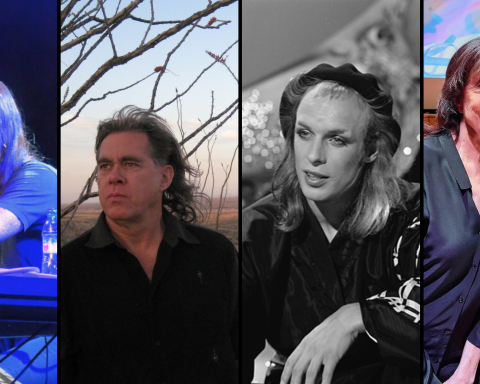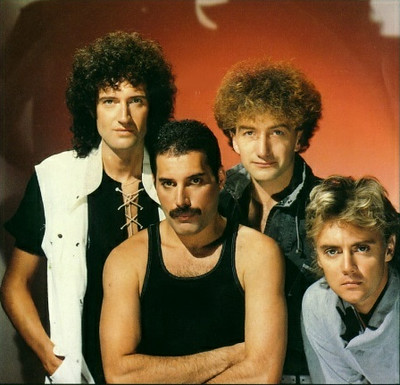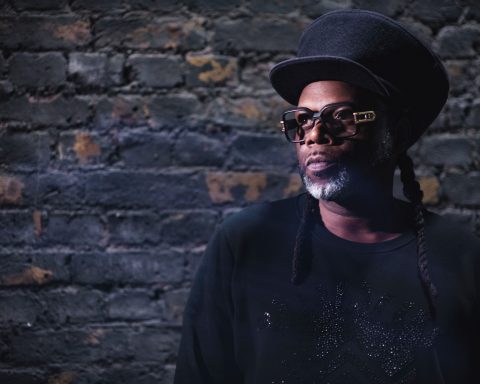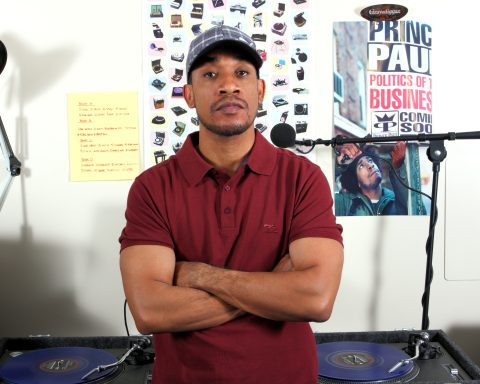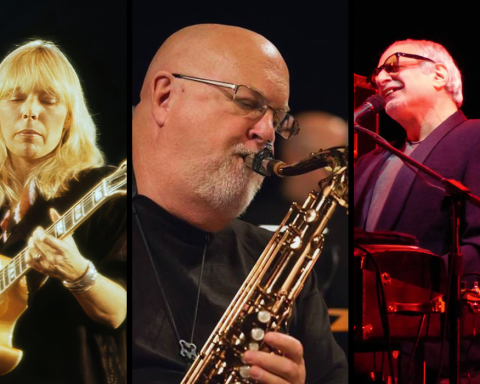Chicago native DJ Pierre emerged as a burgeoning mixologist in the ’80s. Alongside co-founders Herb J and late group member Spanky, Pierre birthed the acid house genre with his DJ/producer crew Phuture. He continued to influence house and acid house in Chicago, New York, and elsewhere in subsequent years. Simultaneously, he maintained an active career as a DJ/producer spanning close to four decades. And it all began with listening to the DJ forefathers of his native city.
Early Influences: Hot Mix 5 to Italo Disco
Pierre’s early inspiration came after catching legendary sets by Frankie Knuckles and Ron Hardy at Warehouse and Music Box. The young DJ’s extended transitions were so smooth that his audience didn’t realize he was blending two songs. Until he dropped one record out of the mix.
One of Pierre’s early teenage influences was WBMX’s Hot Mix 5. That historic DJ crew increased demand for house music in Chicago during the early-’80s. They did so with flawless edits and impeccable mixing skills. The group also dropped Italo disco cuts into their sets, tracks largely unknown to listeners in the United States. Pierre similarly tested his audience’s limits with selections like Stopp’s ’83 Italo jingle “I’m Hungry.” While his turntable confidence grew, Phuture allowed Pierre to experiment with his recordings.
Phuture, TB-303 Manipulation, and “Acid Tracks”
Group member Spanky made the fortuitous decision to pick up a Roland TB-303 bass synthesizer at a pawn shop. The 303 soon became a central piece of their equipment arsenal. During one fateful session, Pierre twisted the machine’s knobs, altering the frequency and resonance of the 303 basslines. The experiment created an irresistible “squelchy” sound. This became the backbone of “Acid Tracks” (originally titled “In Your Mind”) and marked the birth of acid house.
“Roland is the foundation of good house music. And that's Roland period."
Late, heralded house DJ Ron Hardy received a pre-release cassette copy of the song in 1985. Hardy decided to give the aspiring producers his co-sign. He emptied the dancefloor with his first attempt at playing the Phuture concoction. However, after dropping it three more times in the same lengthy set, he won over the skeptical audience.
As the song caught on in the clubs, fans bootlegged it on microcassette. Many incorrectly attributed it to Hardy during its initial rise in popularity. “Acid Tracks” already had a major buzz when Phuture rerecorded it in a proper studio with Marshall Jefferson. The group officially pressed it on Trax Records in 1987.

Acid Naysayers and Creating “We Are Phuture”
The sweet taste of success soon turned bitter, however. In an attempt to detract from Phuture’s innovative work, some Chicago listeners questioned the validity of acid. Particularly vocal individuals approached Spanky and told him acid house was dead. This was just one year after the release of “Acid Tracks.” Despondent, Spanky stopped by Pierre’s house that night to share the story with his friend. Pierre immediately went to work on the defiant response “We Are Phuture” to let people know acid was here to stay. “That is the reason why I wrote that track,” he says. “I was mad because he was so distraught.”
The song is a powerful dismissal of the group’s naysayers. Though perhaps not as well known as “Acid Tracks,” it holds up as a top-notch cut from the crew’s discography. It also proved Phuture was far from one-hit wonders.
Versatility, Quality, and Access: TR-707 and TR-727
Pierre’s role in birthing and upholding acid house is historic and deserves proper documentation. Still, his relationship with Roland gear goes well beyond the TB-303 with which he is frequently associated. “Roland is the foundation of good house music,” he says. “And that’s Roland period.”
In particular, he notes the TR-707 and TR-727 he and Phuture used early on. Pierre says they were two of the first professional drum machines aspiring artists could afford. You can hear the 707/727 combo featured prominently on the “Acid Tracks” beat. And Pierre wasn’t the only musician who felt this way. TRs appeared on a wide range of records. There are unmistakable 707 percussion hits on INXS’s multi-platinum “Need You Tonight.” These two songs lived in different musical worlds in 1987. Yet the Roland drum machine percussion works within the framework of each recording.
Chicago House’s Communal TR-808
Pierre also has fond recollections of one of Roland’s most well-known products: the TR-808. He describes a particular 808 of mysterious origin. The unit made its way around Chicago via a trust-based loan system. Always in transit and never at any one location for long, numerous early Chicago house artists utilized this box. “It was like a community,” he says. “I’m talking to everybody, from K-Alexi to Tyree, to whomever—all of us were using some of the same stuff.”
“It was almost like we were joint parents of this child, and we all had to do our part to take care of the TR-808.”
What stands out to Pierre today is the respect everyone showed the TR-808. All parties needed to keep the machine in good condition so everyone’s careers could progress. Very few had ever met each other face to face when the sharing began, but they somehow made it work. “We knew of each other and we all had great respect for each other,” he says. “It was almost like we were joint parents of this child, and we all had to do our part to take care of it.”
The JUNO-106 and the Genesis of Wild Pitch
The Roland JUNO-106 was critical to Pierre’s career as he moved into the early-’90s. During this transition, he took on the Wild Pitch moniker for some of his production. His new sound placed a heavy emphasis on rich, heavily layered soundscapes for each track. The 106’s unique bass sat at the center of most productions. “The 106 was like the Wild Pitch bassline sound,” he says. “That was the keyboard for me. I had to have that 106 bassline.”
"The 106 was the Wild Pitch bassline sound. I used it to open up the track and take it to a higher level."
Pierre did some bassline manipulation with the 106. However, the emphasis was on layering. “I would manipulate it at times, but only to build the track when I was layering,” Pierre reveals. “If I wanted to get even more hype later on in the track, I’d start messing with the filter on the 106. I’d change up the bass sound and make it more menacing or get a little squelch in there or change the resonance. I used it to open up the track and take it to a higher level.”
Still Taking it to A Higher Level
This music above only scratched the surface of Pierre’s vast and varied discography. He has over 250 production credits listed on Discogs. The Wild Pitch recordings recently saw a re-release on the impressive Wild Pitch: The Story. Bandcamp Daily selected it as Album of the Day in 2017. In addition, Pierre and Spanky received the Roland Lifetime Achievement Award in 2019.

Always, the phuture beckons. At prestigious events like The Arc Music Festival in Chicago, Pierre continues to give audiences mind-bending live shows. From birthing an entire genre and production style to DJing epic sets all over the world, nothing can stop his mission to move people with music.
